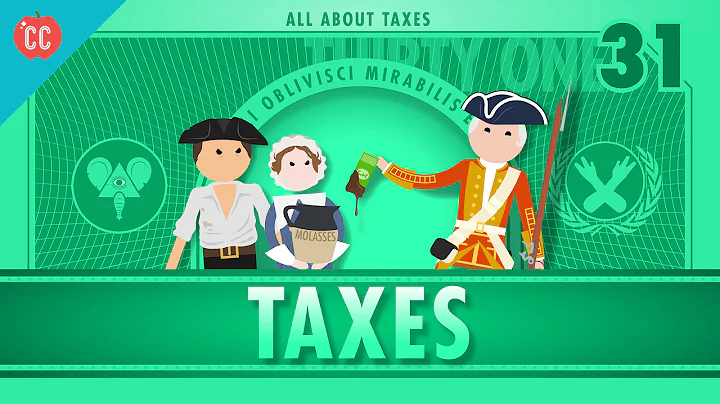What is the difference between a progressive tax and a regressive tax?
progressive tax—A tax that takes a larger percentage of income from high-income groups than from low-income groups. proportional tax—A tax that takes the same percentage of income from all income groups. regressive tax—A tax that takes a larger percentage of income from low-income groups than from high-income groups.
A progressive tax when the tax rate increases as the taxable amount increases. A regressive tax takes a big % away from poor people. A flat tax is when everybody pays the same amount of tax.
Though true regressive taxes are not used as income taxes, they are used as taxes on tobacco, alcohol, gasoline, jewelry, perfume, and travel. User fees often are considered regressive because they take a larger percentage of income from low-income groups than from high-income groups.
The major difference between regressive and progressive taxes is who pays more. For a regressive tax, low-income earners pay more than middle- and high-income earners. For a progressive tax, higher income earners pay more than their lower income peers.
A progressive tax takes a larger percentage of income from high-income groups than from low-income groups and is based on the concept of ability to pay. A progressive tax system might, for example, tax low-income taxpayers at 10 percent, middle-income taxpayers at 15 percent and high-income taxpayers at 30 percent.
Property taxes are an example of a regressive tax; the U.S. federal income tax is a progressive tax example; and occupational taxes are a type of proportional tax.
A regressive tax is one that places a higher tax rate on upper income earners and a very low or nonexistent tax on very lower earners.
What are some examples of regressive taxes? The most common regressive tax is sales tac that places a flat percentage on the total price of a good or service. Other regressive taxes include excise taxes, property taxes, import duties, usage fees and lump-sum taxes.
A progressive tax involves a tax rate that increases (or progresses) as taxable income increases. It imposes a lower tax rate on low-income earners and a higher tax rate on those with a higher income. This is usually achieved by creating tax brackets that group taxpayers by income range.
What Is a Regressive Tax? The term regressive tax refers to a tax that is applied uniformly regardless of income. Regressive taxes take a larger percentage of income from low-income earners than from middle- and high-income earners. As such, the tax burden decreases with regressive taxes as income rises.
What is the difference between regressive and progressive financing?
In a progressive financing system, poorer households contribute a smaller proportion of their ATP to finance health services compared to richer households. A system is regressive when the poor contribute proportionately more.
Progressive taxes take more from those able to pay more. Because this method is based on the ability to pay, it is considered the fairest means of taxation. People with higher incomes pay larger amounts of tax because their taxable income is larger.

A regressive tax takes a higher proportion of earnings from lower-income households than those with higher incomes. This is because they are taxed the same when consuming as higher earners—$100 when shopping is worth more to a lower-tiered earner than it is to a higher-tiered earner, so taxes take more from them.
A regressive tax is a tax imposed in such a manner that the tax rate decreases as the amount subject to taxation increases. "Regressive" describes a distribution effect on income or expenditure, referring to the way the rate progresses from high to low, so that the average tax rate exceeds the marginal tax rate.
The correct option is a): Regressive taxes place a higher burden on people who earn less compared to wealthier taxpayers.
Cons of a Progressive Tax System
Discrimination: A progressive tax system may lead people with lesser incomes to pay a higher tax rate as a percentage of their income. This can create a situation where lower and middle-income families struggling to make ends meet and have more tax deductions on their income.
You may be wondering: is sales tax progressive or regressive? Sales tax is regressive, in fact. Why? Because people who earn less pay a larger percentage of their salary in the form of sales tax, as compared to those who earn more.
State sales tax is an example of a regressive tax.
The income tax is an example of progressive tax.
For example, our income tax system is progressive because it imposes a lower tax rate on low-income earners than on those with a higher income. Tax brackets group taxpayers by income ranges, and high-income taxpayers pay a larger share of the overall tax burden than low-income taxpayers.
What are the pros of a regressive tax system?
Regressive taxes benefit higher-income individuals since taxes decrease as income increases. With progressive taxes, however, taxes are based on an individual's specific amount of taxable income, and the tax rates increase as income increases.
Sales and excise taxes are very regressive.
On average low-income families pay 7 percent of their incomes in sales and excise taxes, middle-income families pay 4.8 percent of their incomes, and the top 1 percent pay 1 percent.
A progressive tax is one where the average tax burden increases with income. High-income families pay a disproportionate share of the tax burden, while low- and middle-income taxpayers shoulder a relatively small tax burden.
Friedman, who would receive the Nobel Prize a few years later, observed that "social security combines a highly regressive tax with largely indiscriminate benefits and, in overall effect, probably redistributes income from lower to higher income persons." "[A]s a way to distribute government assistance to the needy," ...
As of 2023, nine states — Alaska, Florida, Nevada, New Hampshire, South Dakota, Tennessee, Texas, Washington and Wyoming — do not levy a state income tax. New Hampshire Department of Revenue Administration. Frequently Asked Questions - Interest & Dividend Tax.